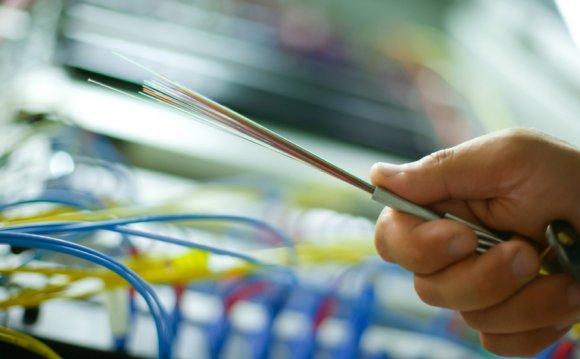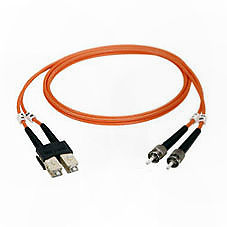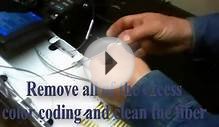
 The telegraph and telephone were two inventions that changed the course of human history. They allowed people to communicate over long distances, making life easier and propelling the world into a newer, more modern age. Today, people still use the same kinds of copper wires that powered the first telegraphs and telephones. This technology is old, unreliable, and as the needs of people grow, will soon be obsolete. Copper wires are making way for the next new technology, namely, fiber optics. Fiber optic cables are used in a variety of ways, from delivering television signals to homes to transferring data between computers that are thousands of miles apart. They are a better alternative to copper wires when it comes to computer networks.
The telegraph and telephone were two inventions that changed the course of human history. They allowed people to communicate over long distances, making life easier and propelling the world into a newer, more modern age. Today, people still use the same kinds of copper wires that powered the first telegraphs and telephones. This technology is old, unreliable, and as the needs of people grow, will soon be obsolete. Copper wires are making way for the next new technology, namely, fiber optics. Fiber optic cables are used in a variety of ways, from delivering television signals to homes to transferring data between computers that are thousands of miles apart. They are a better alternative to copper wires when it comes to computer networks.
This guide aims to help people who are considering wiring their networks using fiber optic cables, by first explaining how they work and why they should be used. Installing and maintaining a computer network with fiber optics is not difficult, especially if users follow the step-by-step instructions detailed in the guide. Fiber optic cables and other devices needed to connect a home network can be bought at specialty electronic stores or ordered through electronics and computer parts suppliers. However, those who prefer to shop online should consider eBay. This site provides buyers a large range of choices when it comes to computer networking supplies.
How Fiber Optic Cables Work
Fiber optic cables use glass fiber strands covered with an insulated casing to send and receive communication signals using light pulses. Each cable can have up to a thousand strands of fiber, with the ability to send terabytes of data in a second. These types of cables have very high bandwidth and can be used over long distances with very little data degradation.
Fiber optic cables are fast because they literally send data at the speed of light. A laser transmitter encodes data into pulses of light that are sent through the cables. When the light pulses reach their destination, they are translated again, back into data that can be read by the receiving device, such a computer.
Reasons to Use Fiber Optic Cables
Computer networks today can be wired using copper or fiber optics. Copper has been used in a variety of applications since the 1920s. It's inexpensive, easy to use, and a great conductor for electricity. Old telephone lines use copper and many are still around today. However, fiber optics have some distinct advantages over copper wires when it comes to transferring data between computers. Fiber optic cables have a higher bandwidth capacity even at long distances, experiences less interference, and are very durable.
Higher Bandwidth and Longer Distances
Fiber optic cables use light to carry information. Light has a very high frequency that enables it to carry much more information at any given time. This makes fiber optic cables ideal for applications that use up a lot of bandwidth, like streaming music or video conferencing. Perhaps more importantly, fiber optic cables can carry data much farther than regular copper cables. The chart below shows the comparison between the two types of cables in relation to data bandwidth and the distance it can carry the said data.
Bandwidth |
Distance |
|
|---|---|---|
|
1.5 Mb/s |
1.5 miles |
|
Fiber Optic Cables |
2.5 Gb/s |
124 miles |
Fiber optic cables can go 100 times further and carry 1, 000 times more bandwidth than copper cables. Since fiber optic cables can carry so much data, the connection will seem faster to the user. While the distance won't be necessary for most home computer networks, having a large bandwidth capacity can ensure the network remains stable even under the most strenuous conditions.
Less Interference
Fiber optic cables are made of glass, which means they are not affected by electrical fields. These cables don't need to be grounded because they are not vulnerable to any type of electrical interference that can interrupt or interfere with signals. Fiber optic cables can even be used outdoors because they are immune to atmospheric conditions, including lightning. For those who may be a bit paranoid, another bonus advantage of fiber optic cables is that they can't be tampered with or tapped into as easily as copper wires.
Durability
Glass doesn't corrode, which means fiber optic cables can endure even the harshest conditions, like outdoors, under soil, or even near chemicals. There's virtually no chance of fire or shock in fiber optic cables because they don't use any electrical energy.
How to Install Fiber Optic Cables on a Computer Network
Installing fiber optic cables on a computer network is not as simple as plugging everything in, but it's manageable for the average person. First, there are two different types of fiber optic cables, and users have to determine which one is right for their network. Next, they can follow the step-by-step instructions for installing a fiber optic cable network.
Choose the Type of Fiber Optic Cable
There are two main types of fiber optic cables. First is the multi-mode fiber optic cable, which is used for short distances, up to 1800 feet. It has the capacity to transfer up to 10 gigabits of data per second. The second type is the single-mode fiber optic cable. This type of cable is more expensive, but it can transmit 10 gigabits per second up to 37 miles. For most office or home networks, the multi-mode fiber optic cable is preferable, since there's really no need to cover very long distances.
YOU MIGHT ALSO LIKE












